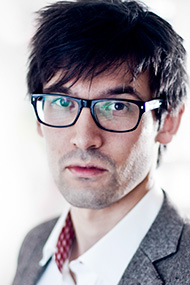This article has been translated with DeepL.
“Beat up Jante – fail more”
- Published: 16 Dec 2015,
- 12:00 AM
- Updated: 16 Dec 2015,
- 12:31 PM

The following text was also published under the vignette “Åsikten” in Entré No 4, 2015:
Researchers Greg Stephens and James Burley have calculated that out of 3 000 ideas for new products in the manufacturing industry, around 300 are usually selected for closer examination. Of these, 125 receive funding for early development. If you thought the sifting was over here, just wait. Four ideas eventually get proper development resources. Fewer than two will become something that can be launched on the market. In the end, only one product idea succeeds commercially, that is, makes money back with a profit.
Innovation is closely linked to risk. Thus, the odds are one in 3 000 for an idea to succeed in the manufacturing industry. In the pharmaceutical industry, it takes around 6 000-8 000 ideas to succeed. So innovation projects fail more often than you think. What does this mean? Two things:
1. We must keep a thousand fires burning. In general, we humans are very bad at predicting the future, at least if you ask scientist Philip Tetlock. His life’s work is to follow up on experts’ predictions about what will happen in the future. He has made 28 000 separate predictions. The result? We might as well throw darts at the various options: experts do worse than chance. However, they have an overconfidence in their own ability to guess correctly, especially if the guess is in their own area of expertise.
The fact is that innovation takes place in a chaotic, so-called low validity environment where it is virtually impossible to determine cause and effect. Sometimes the product that seemed to have every chance of success fails. Sometimes the upstart company comes out of nowhere and blows past the competition. What is the solution?
Because innovation is unpredictable, we need to keep a thousand fires burning. Start small innovation projects and let them fail early. Hopefully, some fire will take hold and make up for all those that went out along the way.
2. We have to beat up Jante. In Sweden, we have difficulty separating people from performance. We like to think that our value as people is linked to how we perform. There is also a social function – most of us want to be seen as successful and thoughtful in the eyes of others.
If we link this to risky innovation work, only those people who can handle failure on a regular basis will engage in innovation. But we can no longer rely on innovation to be fixed by enthusiasts – everyone must contribute to an organization’s ability to innovate.
How can we get better at failing? First, we need to understand that innovators take risks and have the right to fail. Second, we need to cultivate the idea that mistakes lead to learning. Research has shown that winning teams do not learn much because they are not given the opportunity to question their assumptions and ways of working. For losing teams, learning is on steroids – provided someone is interested in picking up the pieces.
When something goes wrong, invite colleagues and ask for their analysis. Be open, humble and authentic. Someone has to start daring to fail – and it might as well be you.
About Leif
Leif Denti holds a postdoctoral position at the Department of Psychology, University of Gothenburg, and conducts research on leadership, creativity and organizational innovation. He can be reached at leif.denti@gu.se



